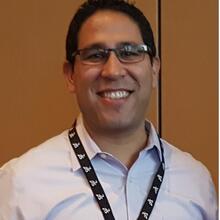
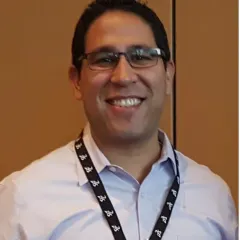
Title:
Model-based approach for re-evaluating the multi-discipline performance of a Check Valve for Hydrogen processing
Abstract:
Renewed interest in a low-carbon economy by governments and companies across the world to achieve a net-zero vision have reinvigorated efforts to re-qualify or re-engineer industrial facilities that can make this vision a reality. In particular, interest in a Hydrogen-supported economy, where Hydrogen is first used for long-term energy storage and eventually used as fuel, has meant that facilities initially certified for other applications (like natural gas storage), need to be re-evaluated to satisfy new demands on their equipment. In this presentation, we focus our efforts on the multi-physics virtual validation of a check valve operating in one such facility assuming an increased demand on its operating pressure conditions and a requirement to sustain a wider temperature range.
By using Dassault Systèmes 3DEXPERIENCE platform, we demonstrate how the engineering work required for validating the performance of a check valve can be carried out in a model-based collaborative engineering environment. The multi-physics validation encompasses the use of both, fluid and structural mechanics disciplines that operate in synchrony to provide a complete assessment of the flow characteristics and structural integrity of the valve. The model-based approach has been proven to reduce cycle time in assessing the multi-discipline evaluation of this piece of engineering equipment, while maintaining full traceability of the overall process.
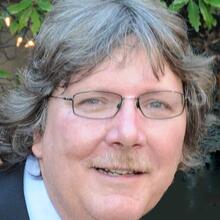
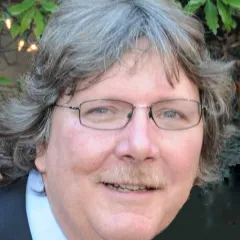
Biography:
Eric joined Dassault Systèmes in 1999 and has held various positions with increasing responsibility including Customer Services Engineer, Development Engineer and Product Manager.
Title:
Structures Update
Abstract:
This presentation will focus on recent Abaqus enhancements related to contact, materials, analysis procedures, and high performance computing (HPC). New capabilities for modeling and results visualization will also be discussed.
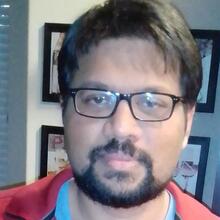
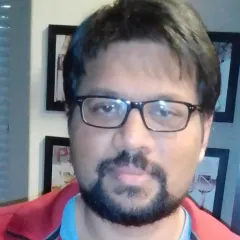
Title:
Fully coupled multi-physics modeling of hydraulic fracturing using Abaqus
Abstract:
In this presentation, we will provide an overview of fully coupled multi-physics simulation capabilities for modeling of fluid-driven (hydraulic) fractures. These models are based on a fully-implicit non-linear FE solver, and comprise two widely established fracture modeling methods: Cohesive Zone Method or CZM (mesh conforms to a pre-defined fracture path) and eXtended Finite Element Method or XFEM (fracture geometry evolves independently of the finite element mesh). Through a series of illustrative examples, we will also demonstrate the applicability of these fracture modeling capabilities in capturing the influence of various geomechanical and operational parameters on hydraulic fractures, such as in-situ stress, fracturing fluid viscosity, formation permeability, presence of other fractures in near vicinity and effect of depletion.

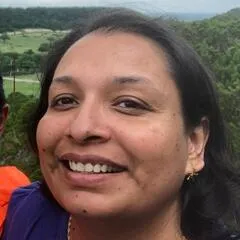
Sreeparna joined Dassault Systèmes Simulia in 2008. During her tenure with SIMULIA she has enjoyed working with customers on Structures-based topics in a variety of roles across pre-sales, training and post-sales support.

Biography:
Mark has been with SIMULIA for over 30 years. Contributing in a variety of sales and technical management roles, he currently leads a global technical sales group supporting advanced applications. He has degrees in structural engineering from Brown University and the University of California, Berkeley.
Title:
SIMULIA Brand Update
Abstract:
Simulation from the SIMULIA brand is absolutely essential to the vision and ambition of Dassault Systèmes. Simulation is a key driver to address the present and future needs of analysts, designers, producers, and consumers. Simulation not only powers product design improvement and cost reduction, but also innovation and sustainability. Hear about the latest in thinking from our brand executive team including recent trends, focus topics, positioning, and ambition.


Biography:
Dr. Goang-Ding SHYU graduated from the Polymer Engineering Department of the University of Akron. After graduation, he worked for the Vinyl Building Product Group of CertainTeed Corporation and worked on rigid PVC formulating and profile extrusion flow analysis. He joined Baker Hughes in 1996 and has been working on polymer materials, failure analysis and finite element analysis for downhole completion tools. He led the Modeling and Simulation group of the Completion & Wellbore Intervention division of Baker Hughes from 2008 to 2014. Today he is a technical advisor. His current research interests include modeling of high-temperature, long-term sealing performance and rapid gas decompression of elastomers.
Title:
Design Verification of Downhole Completion Tools Using Abaqus
Abstract:
Completion tools are installed for oil/gas production after drilling operation. The main completion tools include flow control, safety valve, liner hanger, packer, etc. Design verification is a rigorous analysis process to ensure that the designed tool has enough margin or protection against failure for the anticipated downhole operating conditions. A completion tool is usually designed and test validated along a performance envelope. In the performance plot, one axis is the axial load, the other axis is the (differential) pressure. The performance envelope illustrates the combined effects of (differential) pressure and axial loads at the rated temperature and defines the maximum safe operational limit of the tool. The performance envelope is usually derived from a customer’s Statement of Requirement (SOR), and the customer’s well operating conditions are on/within the rated performance envelope. In this presentation the latest design verification requirements for safety valve (API 14A), packer (API 11D1), and liner hanger (API 19LH) are compared, the safety margin/load factor and failure mode analysis for the performance envelope of a liner hanger using Abaqus are demonstrated. As geometry imperfections (such as ovality, eccentricity and non-uniform thickness) from manufacturing have great effects on the collapse pressure rating, the effect of ovality on the performance rating is also investigated.
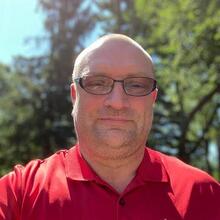

Biography:
Peter DUCKWORTH leads a team of multi-discipline simulation experts at Inceptra supporting customers across the US and Canada as well as software sales, training, and consulting services for the complete portfolio of SIMULIA products. Peter has enjoyed a career in simulation across various industries, including automotive and aerospace, since graduating from University of Glasgow in Scotland with a Bachelor of Mechanical Engineering Honors.
Title:
Abaqus Simulation Flexibility Gained with On-Demand Cloud Computing and Software
Abstract:
Learn how SIMULIA’s new Compute Credits are being used to run Abaqus jobs of moderate to large size on Cloud Computing hardware and slashing run times without incurring a cost premium for the additional speed. Leveraging Compute Credits, users can now gain on-demand access to the SIMULIA Cloud hardware and software needed to run multiple jobs on as many as 144 cores to meet peak and occasional simulation throughput needs efficiently and cost effectively.
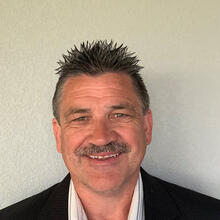
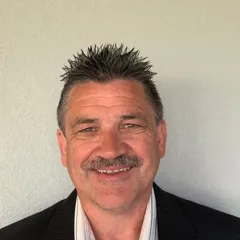
Biography:
Mike SHUBERT has 30 years’ experience working in the software industry. For 28 years he worked as a developer at Hibbitt, Karlsson, & Sorensen before it became part of Dassault Systèmes. He has a Bachelor’s and Master’s degree from the University of Colorado, Boulder in Civil Engineering. While as Dassault Systèmes, he developed in the Abaqus solvers group, as well as, the Abaqus/CAE group. In 2003, he moved to the local office in Texas where he developed Abaqus/CAE customizations such as the PCB Modeler, the Abaqus Welding Interface, and the Wound Composite Modeler. In 2019 he left to start the company QustomApps and began development on WoundSim and QustomWeld.
Title:
Welding Simulation with Abaqus & QustomWeld
Abstract:
Welding simulation has long been performed using Abaqus, but Abaqus lacked the specific capabilities required to perform welding simulations efficiently. That changed in 2018 when Dassault Systems released it first capabilities for simulating the additive manufacturing processes. Although the tools were developed for the additive manufacturing process, the on-the-fly element activation, moving heat fluxes, phase transformation and other capabilities lend themselves well to simulating the welding process. QustomWeld is the first commercial tool to take advantage of the capabilities and make them easy to use within a fully integrated interface inside of Abaqus/CAE. This discussion will cover the capabilities of QustomWeld including deposition welding, beam welding, phase transformations, robot controls, and more.
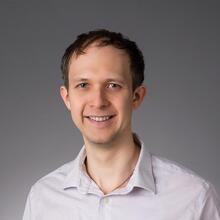

Biography:
Georgiy MAKEDONOV, M.S., is an FEA Engineer at VIAS3D. He received his Masters in Mechanical and Subsea Engineering from the University of Houston. Georgiy has over four years of experience in the use of nonlinear finite element analysis using Abaqus to analyze and design components from different industries such as oil and gas, subsea infrastructure, marine applications, and performing Level 3 fitness-for-service analyses for petrochemical industries. He is experienced in using Abaqus, Solidworks, Isight and the 3DEXPERIENCE platform.
Title:
Integrating Laser Scan Data into FEA Model to Perform Level 3 Fitness-for-Service Assessment of Critical Assets in Refinery & Process Industries
Abstract:
Fitness-for-service (FFS) assessment of safety critical equipment in process and petrochemical industries is an important engineering activity from the perspective of determining the structural integrity of assets. FFS enables an engineer to determine whether the equipment or facility needs a repair, or replacement, or whether it is good to continue for its remaining life or until a planned outage. One of the key aspects for an accurate FFS assessment is to include the current geometric configurations of the structure. With new inspection technologies such as laser scan it is common to gather very accurate information on the current deformed state of the structure. However, the challenge remains in how to utilize and integrate a large volume of data in subsequent high fidelity structural analysis.
This work describes a methodology used to analyze a structure for Level 3 FFS, such as storage tank. Using field laser scan data, the surface points of the storage tank is imported to create geometrical surface in a CAD software (CATIA), and then importing that surface in an FEA model (Abaqus) for FFS assessment. The step of direct import of scan data
into CAD software to generate the digital twin of the structure eliminates the ambiguity of assuming a surface by an engineer that may not be a realistic representation of the true damaged surface. This work shows the complete workflow of importing a laser scan data of a storage tank into CAD, creating a realistic surface from the scan data, and importing that realistic surface into FEA software to perform detailed Level 3 FFS of the tank using Abaqus.
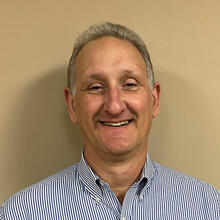
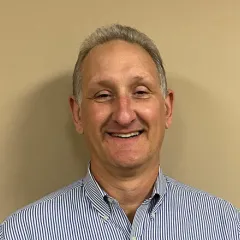
Biography:
Senior Account Manager with over 11 years’ experience in the HPC market and 30 years’ experience in the microcomputer industry. Bob successfully designs and delivers turnkey HPC solutions into education, commercial, and public organizations.
Title:
Nor-Tech Deploys a Cost-Effective Turnkey Computing for SIMULIA Abaqus
Abstract:
Deploying a High-Performance Computing or Workstation optimized for an Abaqus workload. Keeping customers computing demands in mind, Nor-Tech creates solutions to meet our customers’ requirements for the budget available. We streamline the path to productivity with our unique deployment integration process making our solutions cost-effective to deploy and maintain.

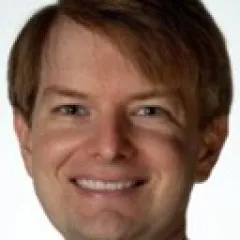
Biography:
Rodney MACH is President of TotalCAE, a leading provider of Managed HPC solutions. Rod is a 21 year veteran in utilizing High Performance Computing for engineering simulation. Mr. Mach has a B.S.E in Electrical Engineering from the University of Michigan, and MBA from Wayne State. Prior to starting TotalCAE in 2006, he led the University of Michigan High Performance Computing center.
Title:
Technology Choices for Accelerating the SIMULIA Portfolio
Abstract:
Learn about the latest technology choices companies are adopting to accelerate the performance of the SIMULIA portfolio. Several customer case studies will be presented along with highlighting the benefits of the latest technologies including:
- Best HPC technology options for the SIMULIA simulation portfolio
- Benefits of HPC networks such as InfiniBand and EFA
- Benefits on the latest Intel and AMD offerings
- On-prem and cloud storage choices
- Performance Tuning options for Abaqus
- GPU performance options
- Co-simulation options on HPC, Hybrid Messaging, and other new HPC developments
At the end of this presentation attendees will have a good understanding of the current landscape for HPC computing, and how leading companies are adopting these technologies to speed up their time to market.

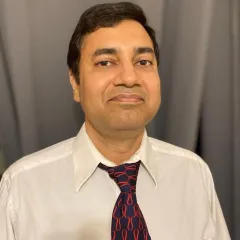
Biography:
Wasy AKHTAR executes and directs the engineering team of JBL Technologies. Prior to JBL Technologies, Wasy worked in the riser and conductor engineering sector where he used advanced FEA and fracture mechanics in design and fitness-for-service of subsea components in deep water operations. Wasy has a total of 20+ publications in peer reviewed journals and conference proceedings in the areas of advanced FEA, fracture mechanics and computational fluid dynamics. He received his MS and PhD in Mechanical Engineering from the University of Houston.
Title:
Abaqus Plug-in Library and Hybrid Performance of Abaqus Standard
Abstract:
There is considerable interest in add-ons to Abaqus pre and post processing (plug-ins) and hybrid architecture performance of Abaqus solver on HPC systems. JBL Technologies presents a library of pre and post processing plug-ins to generate parametric models, create material properties using ASME codes, and post-process for data management.
Further, with the acquisition of a local HPC of 128 cores, hybrid computing performance of Abaqus is studied. While scaling of the Abaqus explicit solver has been studied extensively, Abaqus standard scaling tests are rather limited. Such simulation cases can arise in many industries like the automotive industry where pre-loading of the cylinder head onto the engine block with plastic loading of the gasket can be studied. For the test case, an engine model with a large DOF (> 1e6 DOF) is studied. It is demonstrated that a 10-15% performance improvement can be achieved when using a balanced hybrid computing mode and should be the preferred mode of solving such problems.
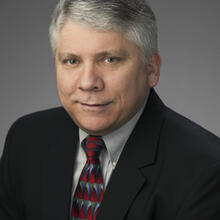

Biography:
Bryan LANE directs all activities of JBL Technologies, an engineering consultancy located in Houston that specializes in product development from prototype to performance verification. JBL Technologies became a Business Partner with Dassault Systèmes in 2011 and now sells and supports several brands of their software. Bryan’s work over the past 40 years has focused on solving emerging product challenges using simulation software in applications ranging from oil field equipment to medical devices. Bryan is a named inventor on 16 US patents in multiple disciplines. He received a BS and MS in Mechanical Engineering from the University of Houston and an MBA from Rice University and is a registered professional engineer in the State of Texas.
Title:
Abaqus Plug-in Library and Hybrid Performance of Abaqus Standard
Abstract:
There is considerable interest in add-ons to Abaqus pre and post processing (plug-ins) and hybrid architecture performance of Abaqus solver on HPC systems. JBL Technologies presents a library of pre and post processing plug-ins to generate parametric models, create material properties using ASME codes, and post-process for data management.
Further, with the acquisition of a local HPC of 128 cores, hybrid computing performance of Abaqus is studied. While scaling of the Abaqus explicit solver has been studied extensively, Abaqus standard scaling tests are rather limited. Such simulation cases can arise in many industries like the automotive industry where pre-loading of the cylinder head onto the engine block with plastic loading of the gasket can be studied. For the test case, an engine model with a large DOF (> 1e6 DOF) is studied. It is demonstrated that a 10-15% performance improvement can be achieved when using a balanced hybrid computing mode and should be the preferred mode of solving such problems.

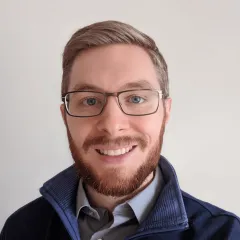
Biography:
Jesse SUTER is responsible for software development at Endurica and joined us in 2014. A true engineer, Jesse enjoys fixing things, increasing efficiencies and working with data. Jesse is the architect of Endurica’s Katana release which takes advantage of multi-threading and speeds code execution. When he’s not making our software better and faster for our users, you will find Jesse brewing fantastic coffee, hiking state and national parks, or completing woodworking projects in his garage.
Title:
Endurica DT Co-simulation for Elastomer Material Property Evolution under HPHT Conditions
Abstract:
At elevated temperatures, elastomers undergo thermochemical changes that drive the evolution of elastic and strength/fatigue properties. Endurica DT’s incremental co-simulation workflow is applied to the analysis of a seal under dynamic HPHT conditions. The ageing effect is specified via the Arrhenius law (ie an activation energy), in combination with master curves detailing the evolution pathways for stiffness, tear strength and fatigue limit. Due to material property evolution, the stress-strain fields in the seal must be updated periodically by Abaqus through Endurica DT’s cosimulation interface. The combined effects of ageing and fatigue on material property evolution and crack growth through a specified thermomechanical operating history are thus tracked, enabling lower risk materials selection and design.


Biography:
With more than 15 years of experience in the field of Finite Element Method simulation, Nicolas has expanded his expertise in multiple industries including automotive, aerospace, and energy. With a background in material science, Nicolas has worked his way up from pre-sales engineer to Director of Sales and Technology at Transvalor Americas Corp. Nicolas is passionate about helping his clients get what they need to best serve their business and succeed no matter what their marketplace is.
Title:
Z-set to Abaqus: Efficient Tools for Advanced Material Modeling, Damage Analysis and Crack Propagation Simulations
Abstract:
Since 1996, TRANSVALOR has commercialized Z-mat for Abaqus—a library of constitutive models for plasticity and viscoplasticity with robust integration methods and advanced coefficient identification procedures. The actual package of integrated solutions provided by TRANSVALOR helps customers to solve challenges ranging from material modeling and parameters' calibration to fatigue life estimation and 3D crack growth simulations. In our talk we will go through the presentation of the Z-set products and their interfaces with Abaqus and provide examples of applications to industrial problems. A particular focus will be given to the 3D fracture analysis tool Z-cracks and crack propagation simulations.
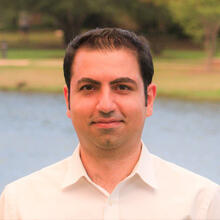
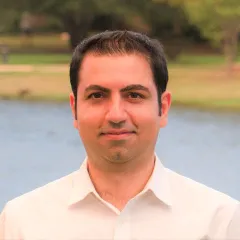
Biography:
Dr. Shobeir Pirayeh Gar is a technical advisor in Halliburton Carrolton Technology Center. His areas of expertise are structural mechanics and dynamics, computational mechanics, and advanced finite element simulations. He obtained his PhD in Structural Engineering from Texas A&M University and is currently a professional licensed engineer in the state of Texas. Over the past 10 years, he has been involved in analysis of complex structural systems in Oil and Gas industry from deep-water floating platforms to downhole completion tools.
Title:
Mechanics and Simulation of Double-Shoulder Threads for Downhole Applications
Abstract:
Thread analysis is a critical structural analysis for downhole applications in the oil and gas industry, where strength and sealing performance of the thread connection is evaluated under the design load envelope. The first step of thread analysis is to model the pre-stressing effects caused by the initial make-up-torque. This modelling is typically done by applying an interference fit in 2D axisymmetric simulations using the well-known power-screw equation. However, interference calculations become challenging if the thread design and geometry are not conventional, such as double-shoulder threads, because the power-screw equation is no longer applicable. The goal of this paper is to establish a general method to numerically calculate the interference fit applicable to both single-shoulder and double-shoulder threads using 2D axisymmetric models. The torque mechanisms of single-shoulder and double-shoulder threads are first compared, and then a new equation is developed to extend the application of power-screw equation to double-shoulder threads. Full 3D simulations followed by 2D axisymmetric finite element analyses are conducted to better understand the mechanics of the problem and verify the proposed method. The analysis results confirm the substantial difference in mechanics of the single-shoulder and double-shoulder threads and the way torque-induced axial force is distributed. Finite element analyses reveal the high fidelity of the proposed methodology, where the results of 3D and 2D simulations as well as the predictions of the proposed equation come into good agreement. The results of this study can substantially improve the make-up torque simulation of threads using 2D axisymmetric models.

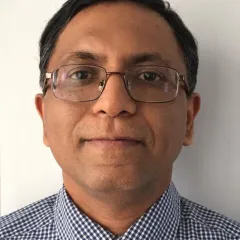
Biography:
Prashanth has been with Dassault Systèmes since 2004. In this primary role of code development, he has contributed to a number of Contact Technology feature enhancements in Abaqus. He holds advanced degrees in applied mechanics from Rice University and the University of California, Berkeley.
Title:
Contact and constraints Update for Abaqus
Abstract:
Contact and constraints functionality in Abaqus is widely used across various industries and workflows covering a broad range of applications, physics and problem sizes. This presentation focuses on recent enhancements in both Abaqus/Standard and Abaqus/Explicit involving contact and constraints.
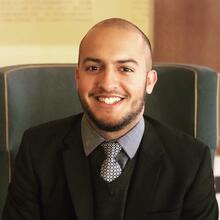
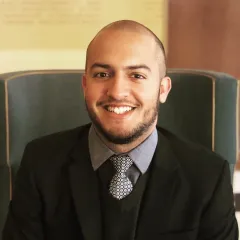
Biography:
Oswaldo RUSSIAN, Ph.D., is a Senior Engineer at Thornton Tomasetti’s Applied Science Practice where he focuses on the use of nonlinear numerical simulation and automation techniques to solve problems for clients in the energy industry while using Abaqus and its API as primary computational mechanics resources. A native of Venezuela, he received his Ph.D. in Civil Engineering and Certification in High-Performance Computing from the University of Houston, where his research focused on numerical modeling of fatigue and fracture in rehabilitated metallic structures.
Title:
Engineering and design of shrouding for LNG pipes using Abaqus
Abstract:
In the United States, regulatory code 49 CFR Part 193, and standards such as NFPA 59A provide safety guidelines for Liquefied Natural Gas (LNG) facilities. These stringent structural design requirements are enforced to ensure no loss of structural and functional integrity. Conventionally inside LNG facilities pipe shrouding is installed as a protective structure surrounding the LNG pipelines. Therefore, the pipe shrouding must meet the design requirements under wind forces and various design spill scenarios. In this study, Abaqus was used to perform the mechanical and thermal analysis of the pipe shrouding. In this case, nonlinear inelastic analysis was performed where both geometric and material nonlinearities were considered. Additionally, for the design checks under environmental loading elastic analysis was performed. In performing the analysis Abaqus’ in-built parallel processing was utilized. The strength and serviceability design checks were performed using the state variables - von Mises stress and displacement. Python scripts were employed to extract state variables and to plot the stress contour from the output files. Finally, the shroud geometry was exported from the model database files into files of ‘STP’ format to perform clash check with field cloud point data using the software Navisworks. The same ‘STP’ files were also applied to create models for the fabricator in the Tekla software.


Biography:
Milton ESTEVA is a Sr. Tubular Design Specialist at BP. He specializes in advanced casing and tubing design with extensive experience in the design of Annular Pressure Build-up (APB) mitigation strategies for deepwater wells. Milton’s interest also includes the development of fit for purpose numerical models and the application of finite element modelling for casing and tubing design. He has been working for BP for more than 13 years and holds a BS and MS in Mechanical Engineering and Manufacturing from ITESM, Mexico and a PhD in Mechanical Engineering from Rice University, USA.
Title:
Modelling Bow Spring Centralizers for Casing Stand-off Estimation
Abstract:
Optimal casing centralization is critical in achieving proper fluid displacement. In cementing applications, proper casing stand-off helps in the prevention of mud channeling and hence increases the likelihood of achieving zonal isolation objectives. In open-hole completion applications, it benefits fluid displacement when swapping drilling mud with completion fluids. The use of a stiff-string formulation in addition to the real bow centralizer behavior will provide the best possible solution for casing stand-off estimation in the industry. This study will demonstrate how to use tube-in-tube elements to mimic the non-linear force-displacement behavior of bow spring centralizers.
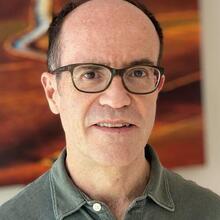
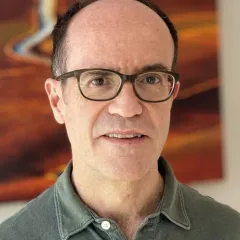
Biography:
Juan has been working in the SIMULIA R&D organization for over 20 years. During that time he has made many contributions to the mechanics technology in Abaqus, especially in the area of constitutive modeling of materials. As leader of Materials Technology, Juan is directly involved in the long term planning and development of functionality needed to address our customers’ needs in the area of materials modeling. Currently Juan manages the Nonlinear Mechanics development team, responsible for advanced nonlinear mechanics capabilities in the Abaqus solvers.
Prior to joining SIMULIA, Juan held several positions in academic research institutions, including Professor of Continuum Mechanics at the University of Granada (Spain) and Research Associate at the Division of Engineering at Brown University (USA). Juan holds a B.S. in Mechanical Engineering from the University of Seville (Spain) and a M.S. and Ph.D. in Materials Science and Engineering from Northwestern University (USA).
Title:
Abaqus 2022x Materials & Mechanics Update
Abstract:
The Abaqus Unified FEA product suite is at the forefront of realistic structural simulation technology, offering the most comprehensive and robust set of solutions in the market for advanced materials modeling and other nonlinear mechanics simulation needs. The technology in Abaqus keeps advancing in response to industry requirements for more accurate, robust and efficient modeling of complex material behaviors and processes.

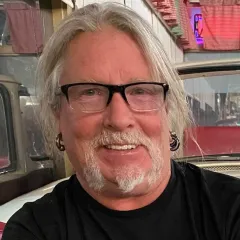
Biography:
Glenn currently is the Senior NC Sales Engineer at Vias Corp. Prior to joining Vias, Glenn spent the last 12 years in the Aerospace and Automotive Industry specializing in Engineering and Design of parts for the military, NASA and Automotive suppliers. He started out in the Aerospace field working in Product Engineering and eventually became Head of Engineering of a large defense supplier in the Florida Panhandle. During his time as Head of Engineering, he worked on a variety of projects including the Lockheed F35, F16 and C130 designs. Upon leaving the defense supplier, Glenn opened his own Engineering and Machine shop and began designing and manufacturing prototypes for several defense suppliers to the Air Force Base.
Before Glenn was in Aerospace, he was in Automotive as a Research and Design Engineer for a Clutch plate manufacturer developing new products and testing wet and dry friction with new materials. Glenn holds an ASE Master Tech Certification in the Automotive Industry where he spent his early years rebuilding transmissions. While at Corporate AAMCO Glenn was a Corporate Trainer and Regional Manager responsible for training automotive techs, and presenting around the Globe on Transmissions.
Glenn’s skills include CATIA Design, manufacturing assembly and machine programming, CMM programming, VBA and Data Base development.
Title:
Integrating Laser Scan Data into FEA Model to Perform Level 3 Fitness-for-Service Assessment of Critical Assets in Refinery & Process Industries
Abstract:
Fitness-for-service (FFS) assessment of safety critical equipment in process and petrochemical industries is an important engineering activity from perspective of determining the structural integrity of assets. FFS enables an engineer to determine whether the equipment or facility needs a repair, or replacement, or whether it is good to continue for its remaining life or until a planned outage. One of the key aspects for an accurate FFS assessment is to include the current geometric configurations of the structure. With new inspection technologies such as laser scan it is common to gather very accurate information on the current deformed state of the structure. However, the challenge remains in how to utilize and integrate a large volume of data in subsequent high fidelity structural analysis.
This work describes a methodology used to analyze a structure for Level 3 FFS, such as storage tank. Using field laser scan data, the surface points of the storage tank is imported to create geometrical surface in a CAD software (CATIA), and then importing that surface in an FEA model (Abaqus) for FFS assessment. The step of direct import of scan data into CAD software to generate the digital twin of the structure eliminates the ambiguity of assuming a surface by an engineer that may not be a realistic representation of the true damaged surface. This work shows the complete workflow of importing a laser scan data of a storage tank into CAD, creating a realistic surface from the scan data, and importing that realistic surface into FEA software to perform detailed Level 3 FFS of the tank using Abaqus.

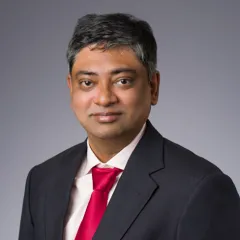
Biography:
Arindam CHAKRABORTY, Ph.D., PE (CA, TX) has more than 18 years of combined academic and industry consulting experience in the domain of simulation and engineering analysis. He has degrees in Civil (Bachelors), Aerospace (MTech.) and Mechanical (PhD) with focus on computational solid and structural mechanics, non-linear FEA, fatigue and fracture, reliability and optimization, and composite structures. His industry experience spans Oil & Gas, Nuclear, Process & Petrochemical, Consumer Packaged Goods, Life Science, Hi-Tech, Automotive and Industrial Equipment. He has been involved with consulting project management and leadership, business development, development of new technology and future growth strategy with a strong focus on public safety regulations (BSEE, NRC, FDA) and Digital Transformation. He has experience in automating complex engineering problems using codes in FORTRAN/C/C#/VBA/Java/Python/FOX Toolkit, including Abaqus automation scripts. Dr. Chakraborty has more than twenty-five conference and journal publications and many invited talks and panel discussions. He is also actively involved with many code (ASME, API) and international conferences committees. He is also a Dassault Systèmes Certified Training Instructor and taught University courses as an invited lecturer.
Title:
Integrating Laser Scan Data into FEA Model to Perform Level 3 Fitness-for-Service Assessment of Critical Assets in Refinery & Process Industries
Abstract:
Fitness-for-service (FFS) assessment of safety critical equipment in process and petrochemical industries is an important engineering activity from perspective of determining the structural integrity of assets. FFS enables an engineer to determine whether the equipment or facility needs a repair, or replacement, or whether it is good to continue for its remaining life or until a planned outage. One of the key aspects for an accurate FFS assessment is to include the current geometric configurations of the structure. With new inspection technologies such as laser scan it is common to gather very accurate information on the current deformed state of the structure. However, the challenge remains in how to utilize and integrate a large volume of data in subsequent high fidelity structural analysis.
This work describes a methodology used to analyze a structure for Level 3 FFS, such as storage tank. Using field laser scan data, the surface points of the storage tank is imported to create geometrical surface in a CAD software (CATIA), and then importing that surface in an FEA model (Abaqus) for FFS assessment. The step of direct import of scan data into CAD software to generate the digital twin of the structure eliminates the ambiguity of assuming a surface by an engineer that may not be a realistic representation of the true damaged surface. This work shows the complete workflow of importing a laser scan data of a storage tank into CAD, creating a realistic surface from the scan data, and importing that realistic surface into FEA software to perform detailed Level 3 FFS of the tank using Abaqus.
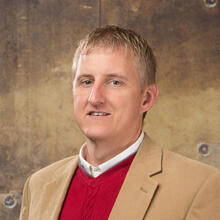
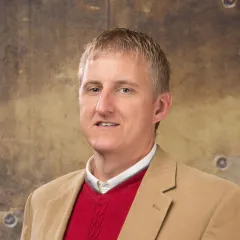
Biography:
Darren J. HARTL is an Associate Professor at Texas A&M. His research work bridges the topics of advanced multifunctional material systems and their integration into aerospace platforms while his educational focus is structural analysis and design, especially via FEM. Previously Dr. Hartl held joint appointments at the Air Force Research Laboratory (AFRL) in the Materials and Manufacturing Directorate and Aerospace Systems Directorate and has over 19 years of experience working with multifunctional and morphing structures. He has co-authored 200+ technical publications on the topics of active materials modeling, testing, and integration. Dr. Hartl served as an Associate Editor for the Journal of Intelligent Material Systems and Structures and was selected as the 2016 recipient of the ASME Gary Anderson Early Achievement Award for his contributions to the active material and adaptive structures communities.
Title:
Optimization of Aerospace Structures via Abaqus and Tosca: A Survey of Senior Student Projects
Abstract:
With its wide range of analysis capabilities, ease of use, and powerful scripting capabilities, Abaqus has become the tool of choice for teaching the concepts of structural analysis and design to senior Aerospace Engineering students at Texas A&M University. Since 2013, students seeking to build standout capabilities in this area have taken one particular course that reviews FEA concepts and the use of Abaqus/CAE and Abaqus/Standard, introduces Python-based scripting and the concepts of Design of Experiment and optimization, and then requires synthesis of all of these into a single final project. Such projects must include multiple parts, at least five design variables and four performance metrics, and include rigorous DOE and optimization studies to arrive at a final best design. Finally, a preconfigured workflow is used to allow students to step “inside” their designs regardless of scale using one of a number of virtual reality – VR – options.
This talk will review the technical sequence of the course and the impact it has had on students with an interest in solid mechanics, but will focus on highlighting the wide range of impressive analysis and design studies that students have completed – including a diversity of wings, morphing rotor blades, rocket assemblies, astronaut gloves, and even surfboards - many of them rivaling the work performed in many companies. Finally, the role of immersive VR visualization in increasing student understanding and excitement will be demonstrated.
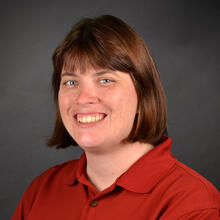
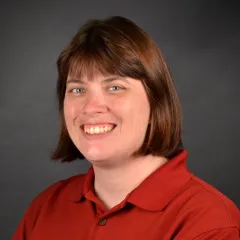
Biography:
Melanie SARZYNSKI has extensive experience in solid mechanics analyses including evaluation of various failure modes to support design and fitness for service (FFS) assessments. Her specialization in advanced finite element analysis, fatigue evaluation, and fracture mechanics assessment has led to frequent consulting on the design and analysis of a variety of components, design and certification of pressure vessels for high pressure applications, and strength and fatigue verification of a variety of equipment. She is a licensed professional engineer, and holds a bachelor of science, master of science, and doctorate all in mechanical engineering from Texas A&M University.
Title:
Sharpening the Pencil on Live Loads: A Design Story
Abstract:
Thread analysis is a critical structural analysis for downhole applications in the oil and gas industry, where strength and sealing performance of the thread connection is evaluated under the design load envelope. The first step of thread analysis is to model the pre-stressing effects caused by the initial make-up-torque. This modelling is typically done by applying an interference fit in 2D axisymmetric simulations using the well-known power-screw equation. However, interference calculations become challenging if the thread design and geometry are not conventional, such as double-shoulder threads, because the power-screw equation is no longer applicable. The goal of this paper is to establish a general method to numerically calculate the interference fit applicable to both single-shoulder and double-shoulder threads using 2D axisymmetric models. The torque mechanisms of single-shoulder and double-shoulder threads are first compared, and then a new equation is developed to extend the application of power-screw equation to double-shoulder threads. Full 3D simulations followed by 2D axisymmetric finite element analyses are conducted to better understand the mechanics of the problem and verify the proposed method. The analysis results confirm the substantial difference in mechanics of the single-shoulder and double-shoulder threads and the way torque-induced axial force is distributed. Finite element analyses reveal the high fidelity of the proposed methodology, where the results of 3D and 2D simulations as well as the predictions of the proposed equation come into good agreement. The results of this study can substantially improve the make-up torque simulation of threads using 2D axisymmetric models.
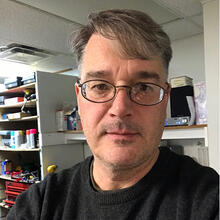
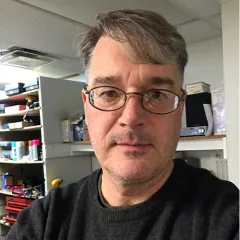
Biography:
Dr. Ron FOERCH has been working in the area of material solutions for CAE since finishing his doctorate at the School of Mines Paris in 1996. This work has included developing the Z-mat and Z-post interfaces to Abaqus, initial efforts for the eventual Z-Cracks product, creating a production TMF material testing service, and helping numerous enterprise customers advance their material simulation capabilities in a coherent way with their CAE philosophies. Ron is happy to have the chance to talk about Transvalor's state of the art to the Houston RUM.
Title:
Z-set to Abaqus: Efficient Tools for Advanced Material Modeling, Damage Analysis and Crack Propagation Simulations
Abstract:
Since 1996, TRANSVALOR has commercialized Z-mat for Abaqus—a library of constitutive models for plasticity and viscoplasticity with robust integration methods and advanced coefficient identification procedures. The actual package of integrated solutions provided by TRANSVALOR helps customers to solve challenges ranging from material modeling and parameters' calibration to fatigue life estimation and 3D crack growth simulations. In our talk we will go through the presentation of the Z-set products and their interfaces with Abaqus and provide examples of applications to industrial problems. A particular focus will be given to the 3D fracture analysis tool Z-cracks and crack propagation simulations.
